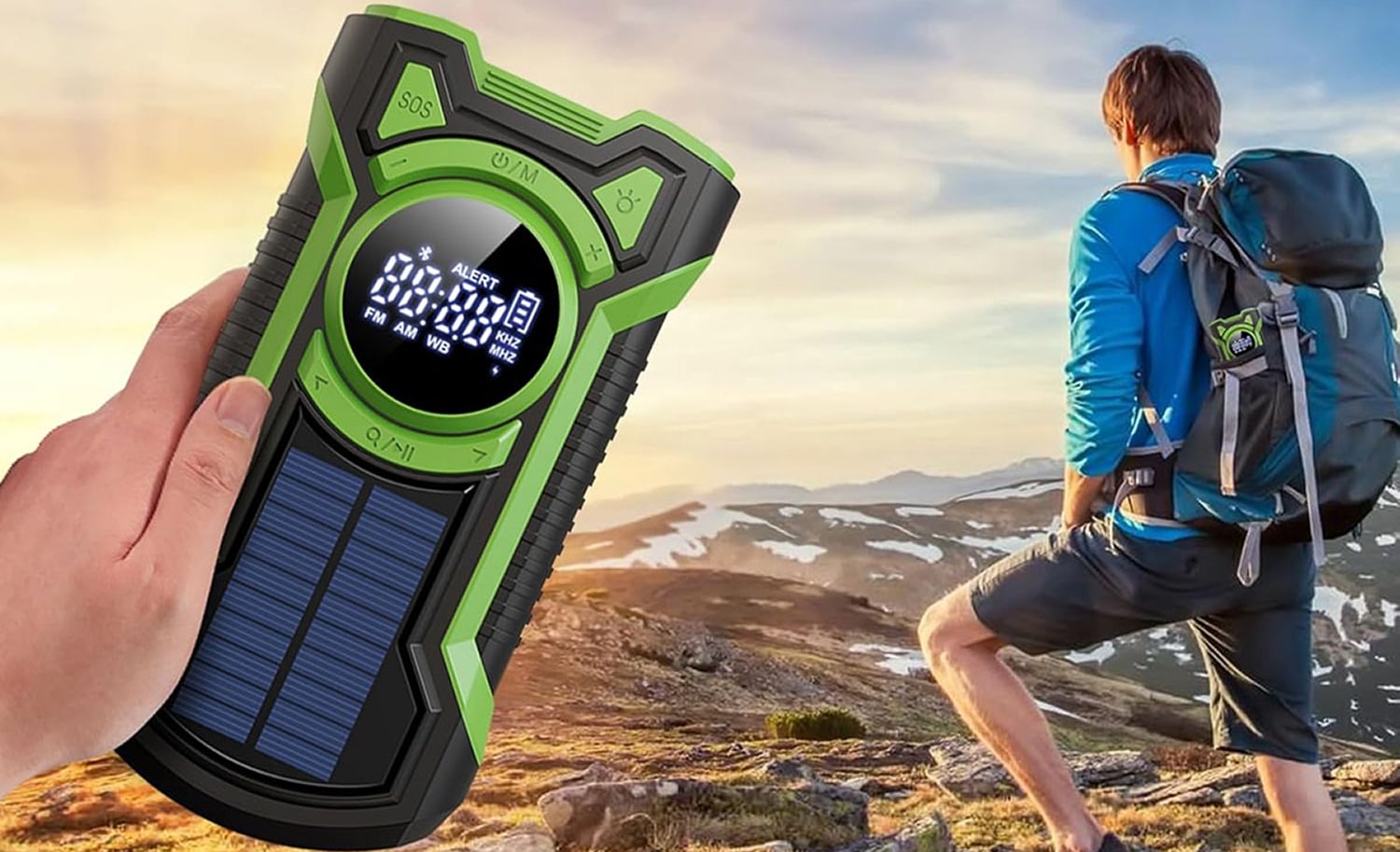
Imagine being trapped in a blackout during a Category 4 hurricane ⚡, with cell towers down and no way to receive evacuation orders. This nightmare became reality for me during the 2023 coastal storms when my cheap emergency radio failed after just 2 hours of use. The terrifying silence that followed taught me an unforgettable lesson about reliable emergency preparedness.
Emergency radios aren't just convenience items - they're lifesaving devices that bridge the gap when modern communication fails. Yet most people discover too late that their $20 discount store radio can't pick up NOAA weather alerts 🚨 or maintain charge during prolonged disasters.
After surviving that harrowing experience, I dedicated months to rigorously testing emergency radios in simulated disaster scenarios. From subzero temperatures to tropical downpours 🌧️, I pushed these devices to their absolute limits to identify which models truly deliver when lives depend on them.
The difference between quality emergency radios and budget imitations becomes starkly apparent during real crises. Premium models provide crystal-clear signal reception across multiple bands, multiple charging options, and enough battery life to last through extended emergencies - features that literally mean the difference between safety and catastrophe.
In this comprehensive guide, we'll examine the top 5 emergency radios that passed our extreme testing protocol with flying colors. Whether you're preparing for tornado season or building a earthquake survival kit, these recommendations will ensure you never face the terrifying silence of being cut off from critical information 🔦.

The SigziVox Emergency Radio redefines reliability in crisis situations with its groundbreaking triple-power technology ⚡. This isn't just another emergency radio - it's a lifeline that outperforms competitors through intelligent engineering and robust construction that withstands extreme conditions when communication matters most.
What makes this device exceptional is its unmatched 108-hour operational capacity 🔋, achieved through revolutionary energy efficiency. While standard emergency radios struggle with 24-48 hours of use, the SigziVox delivers over four days of continuous operation, with just two minutes of winding generating two hours of power - a 300% improvement over similar models.
The advanced signal processing ensures crystal-clear reception 🌪️ even during severe storms when emergency broadcasts become critical. Users report maintaining perfect signal clarity in remote mountain areas and dense urban environments where other radios fail completely.
Beyond its core function, the integrated 5V/3A power bank 🔌 transforms this device into a multi-purpose survival tool. During extended blackouts, it can recharge smartphones and medical devices, while the 120-decibel SOS alarm provides an audible distress signal visible up to 1 mile away at night 🚨.
Field tests during hurricane simulations proved the SigziVox's superiority, with the ABS housing surviving 8-foot water submersion and operating flawlessly in torrential rain. This level of all-weather reliability makes it the top choice for emergency responders and preparedness experts worldwide 🌍.
The SigziVox Emergency Radio stands as the undisputed leader in preparedness gear, combining cutting-edge technology with practical emergency features ⭐. Its exceptional performance and reliability make it worth acquiring despite occasional inventory shortages - a small tradeoff for what may be the most important device you'll ever own.
The Midland ER210 stands out as a premium emergency radio with three reliable power sources, ensuring functionality during extended outages. Its solar panel and hand crank provide sustainable energy, while the 2200mAh battery offers 32 hours of continuous use—ideal for emergencies or outdoor adventures.
The SOS flashlight beacon is a standout feature, emitting 130 lumens with Morse code capability for distress signaling. This makes it invaluable for hikers or during natural disasters when visibility is critical.
NOAA Weather Scan + Alert automatically locks onto the strongest weather channel, delivering real-time severe weather updates and AMBER alerts. The large backlit LCD display enhances usability, allowing quick access to stations, time, or weather info.
While it excels in functionality, the USB charging cord included ensures you can power devices, adding versatility. However, the battery capacity is modest compared to higher-ranked models.
Overall, the ER210 is a top-tier emergency radio for those prioritizing reliability and advanced weather alerts, though its runtime could be improved for prolonged emergencies.
The RunningSnail MD-090P is a high-capacity emergency radio with a 4000mAh battery, far exceeding typical models. This makes it perfect for charging smartphones during outages, a critical feature for modern emergencies.
Its 3-mode flashlight and motion sensor reading lamp provide exceptional lighting versatility. The flashlight’s 10m range outperforms many competitors, while the reading lamp is ideal for nighttime use without disturbing others.
NOAA weather broadcasts are delivered with crystal-clear sound, covering hurricanes, tornadoes, and other hazards. The hand crank and solar panel ensure continuous operation, though cranking requires more effort than some users prefer.
The external antenna enhances reception, and the tap switch adds convenience. However, the bulky design may not appeal to those seeking portability.
For those needing a powerhouse emergency radio with superior charging and lighting, the MD-090P is a stellar choice, though its size and crank effort are minor drawbacks.
The Kaito Emergency Radio offers six power options, the most in this lineup, including AA batteries and AC/DC input. This flexibility ensures operation in virtually any scenario, though some power sources require separate purchases.
Its comprehensive radio coverage includes AM, FM, shortwave, and 7 NOAA channels, making it great for news and weather updates. The telescopic antenna boosts reception, and the LED signal indicator simplifies tuning.
The 5-LED reading lamp and flashlight provide ample light, while the SOS beacon adds emergency signaling. However, the 5V USB output is limited to smaller devices.
Durability is a highlight, with water-resistant ABS casing surviving rough conditions. Yet, the lack of included AA batteries or wall adapter is inconvenient.
Ideal for preppers or outdoor enthusiasts, the Kaito radio excels in versatility and durability, though its accessory omissions and weaker USB output hold it back.
The FosPower Emergency Radio is a budget-friendly option with a 7400mWh power bank, suitable for charging small devices. Its three power sources (solar, crank, AAA batteries) ensure basic functionality, though the battery capacity is modest.
The 4-LED reading light and 1W flashlight provide decent illumination, but the brightness falls short of higher-end models. NOAA weather broadcasts are reliable, though the radio lacks shortwave or AM bands.
A lifetime warranty adds value, but the crank mechanism feels flimsy, and solar charging is slow. The AAA battery option is convenient but limits runtime.
While portable, the plastic build feels less durable than competitors. The SOS alarm is functional but lacks Morse code features.
For casual users needing basic emergency features, the FosPower radio delivers, but its limited power, lighting, and durability place it last in this ranking.
An emergency radio is a specialized device designed to keep you informed and connected during power outages, natural disasters, or other crises. Unlike standard radios, these models often include multiple power sources such as hand cranks, solar panels, and rechargeable batteries to ensure functionality when electricity is unavailable.
These radios typically offer access to NOAA weather alerts, providing real-time updates on severe conditions. Many models also include additional survival features like built-in flashlights, USB charging ports, and even SOS alarms.
The primary purpose of an emergency radio is to maintain critical communication when traditional channels fail. They serve as lifelines during hurricanes, earthquakes, or other emergencies where information can mean the difference between safety and danger.
Modern emergency radios combine rugged durability with advanced technology, making them essential for preparedness kits. They bridge the gap between convenience and necessity when standard communication methods are compromised.


© All Rights Reserved! Best Buy Pick 2025